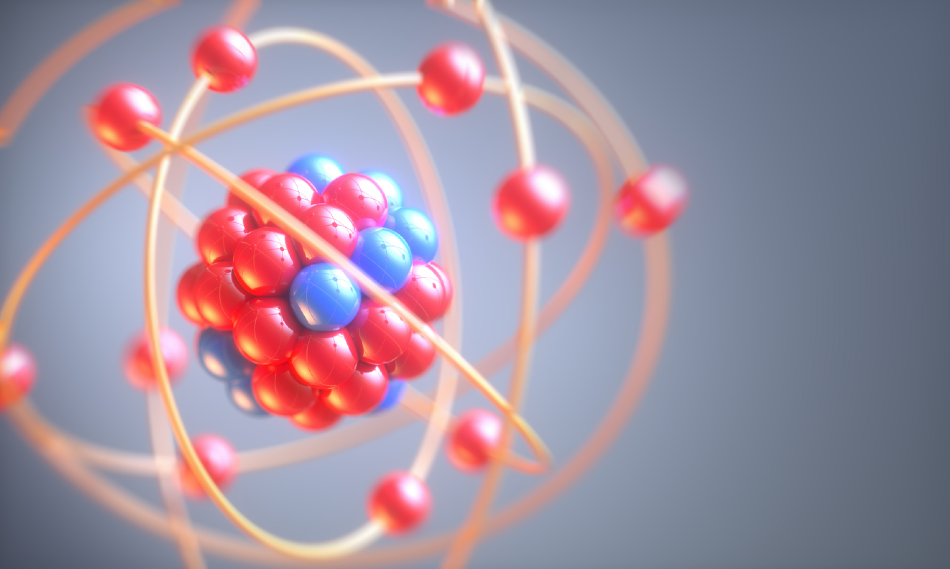Jan 20 2020
For the first time, researchers have successfully captured and imaged the bonding between atoms with the help of sophisticated microscopy techniques. The team has effectively captured a moment of breaking and forming a chemical bond that measures about half a million times smaller than the thickness of a single strand of human hair.

Image Credit: University of Nottingham
Since the time it was suggested that atoms are the world’s building blocks, investigators have been struggling to figure out why and how the atoms bond to one another.
Whether it is a block of material, a molecule (which refers to a group of atoms bound together in a specific manner), or a whole living organism, everything is eventually regulated by the way bonding occurs between atoms and the way the chemical bonds break.
A major difficulty is that chemical bonds measure only 0.1–0.3 nm in length, that is, approximately half a million times smaller than the thickness of a single human hair. As a result, it is difficult to directly image the bonding that occurs between two atoms.
Sophisticated microscopy techniques such as scanning tunneling microscopy (STM) or atomic force microscopy (AFM), can resolve the positions of atoms and directly quantify the lengths of the chemical bonds. However, imaging the real-time breakage or formation of chemical bonds, with spatiotemporal continuity, continues to be one of the biggest challenges of science.
This difficulty has been resolved by a team of researchers from Germany and the United Kingdom, headed by Ute Kaiser, Professor and head of the Electron Microscopy of Materials Science in the University of Ulm, and also by Andrei Khlobystov, a Professor in the School of Chemistry at the University of Nottingham.
The researchers have published an article titled “Imaging an unsupported metal-metal bond in dirhenium molecules at the atomic scale” in Science Advances—a journal of the American Association for the Advancement of Science encompassing all facets of scientific endeavor.
Atoms in a Nano Test Tube
The research team is known for its groundbreaking application of transmission electron microscopy (TEM) to film chemical reaction “movies” at the single-molecule level and to image the dynamics of very small groups of metal atoms in nanocatalysts that use carbon nanotubes.
Carbon nanotubes are hollow and atomically thin carbon cylinders that have diameters at the molecular scale, that is, 1 to 2 nm, as tiny test tubes for atoms.
According to Professor Andrei Khlobystov, “Nanotubes help us to catch atoms or molecules, and to position them exactly where we want. In this case we trapped a pair of rhenium (Re) atoms bonded together to form Re2. Because rhenium has a high atomic number it is easier to see in TEM than lighter elements, allowing us to identify each metal atom as a dark dot.”
As we imaged these diatomic molecules by the state of the art chromatic and spherical aberration-corrected SALVE TEM, we observed the atomic-scale dynamics of Re2adsorbed on the graphitic lattice of the nanotube and discovered that the bond length changes in Re2in a series of discrete steps.
Ute Kaiser, Professor and Head of the Electron Microscopy of Materials Science, University of Ulm
A Dual-Use of Electron Beam
The researchers have an excellent track record of utilizing the electron beam as a dual-purpose tool—to accurately image the positions of atoms and to activate chemical reactions caused by the transfer of energy from rapidly moving electrons of the electron beam to the atoms.
Using the “two-in-one” trick with the TEM technique, the scientists were able to capture movies of molecules that reacted previously. Currently, the team filmed a pair of two atoms that are bonded together in Re2 “walking” along the nanotube in a nonstop video.
It was surprisingly clear how the two atoms move in pairs, clearly indicating a bond between them. Importantly, as Re2moves down the nanotube, the bond length changes, indicating that the bond becomes stronger or weaker depending on the environment around the atoms.
Dr Kecheng Cao, Research Assistant, University of Ulm
Cao discovered this phenomenon and carried out the imaging experiments.
Breaking the Bond
After some time, Re2 atoms displayed vibrations that distorted their circular shapes onto ellipses, causing the bond to stretch. As the length of the bond reaches a value that surpasses the sum of the radii of atoms, the bond breaks and the vibration stops, suggesting that the atoms no longer depend on each other. After a brief period, the atoms attach together again and recreate a molecule of Re2.
According to Dr Stephen Skowron, a Postdoctoral Research Assistant at the University of Nottingham, “Bonds between metal atoms are very important in chemistry, particularly for understanding magnetic, electronic, or catalytic properties of materials. What makes it challenging is that transition metals, such as Re, can form bonds of different order, from single to quintuple bonds.”
Skowron continued, “In this TEM experiment we observed that the two rhenium atoms are bonded mainly through a quadruple bond, providing new fundamental insights into transition metal chemistry.”
Skowron performed the calculations for Re2 bonding.
Electron Microscope as a New Analytical Tool for Chemists
To our knowledge, this is the first time when bond evolution, breaking and formation was recorded on film at the atomic scale. Electron microscopy is already becoming an analytical tool for determining structures of molecules, particularly with the advance of the cryogenic TEM recognised by 2017 Nobel Prize in Chemistry.
Andrei Khlobystov, Professor, School of Chemistry, University of Nottingham
Khlobystov continued, “We are now pushing the frontiers of molecule imaging beyond simple structural analysis, and towards understanding dynamics of individual molecules in real time.”
The researchers believe that in the days to come, electron microscopy may turn out to be a general technique for exploring chemical reactions, analogous to spectroscopic techniques that are extensively used in the field of chemistry.
Watch chemical bonds forming and breaking in a molecule | Science News
Video Credit: University of Nottingham